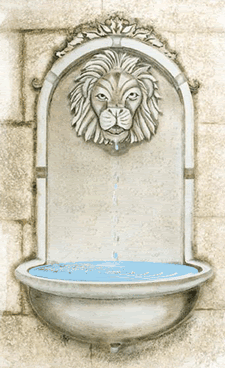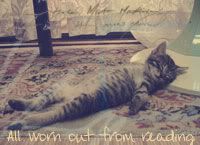On Scientific Theories
 A scientific theory must 'save' or 'preserve' the appearances, the phenomena, it deals with, in the sense of getting them all in, doing justice to them. Thus for example, your phenomena are luminous points in the night sky which exhibit such and such movement in relation to one another and in relation to an observer at a particular point, or various chosen points, on the surface of the Earth. Your astronomical theory will be a supposal such that, if it were true, the apparent motions from the point or points of observation would be those you have actually observed. The theory will then have 'got in' or 'saved' the appearances.
A scientific theory must 'save' or 'preserve' the appearances, the phenomena, it deals with, in the sense of getting them all in, doing justice to them. Thus for example, your phenomena are luminous points in the night sky which exhibit such and such movement in relation to one another and in relation to an observer at a particular point, or various chosen points, on the surface of the Earth. Your astronomical theory will be a supposal such that, if it were true, the apparent motions from the point or points of observation would be those you have actually observed. The theory will then have 'got in' or 'saved' the appearances.But if we demanded no more than that from a theory, science would be impossible, for a lively inventive faculty could devise a good many different supposals which would equally save the phenomena. We have therefore had to supplement the canon of saving the phenomena by another canon--first, perhaps, formulated with full clarity by Occam. According to this second canon we must accept (provisionally) not any theory which saves the phenomena but that theory which does so with the fewest possible assumptions. Thus the two theories (a) that the bad bits in Shakespeare were all put in by adapters, and (b) that Shakespeare wrote them when he was not at his best, will equally 'save' the appearances. But we already know that there was such a person as Shakespeare and that writers are not always at their best. If scholarship hopes ever to achieve the steady progress of the sciences, we must therefore (provisionally) accept the second theory. If we can explain the bad bits without the assumption of an adapter, we must.
In every age it will be apparent to accurate thinkers that scientific theories, being arrived at in the way I have described, are never statement of fact. That stars appear to move in such and such ways, or that substances behaved thus and thus in the laboratory; these are statements of fact. The astronomical or chemical theory can never be more than provisional. It will have to be abandoned if a more ingenious person thinks of a supposal which would 'save' the observed phenomena with still fewer assumptions, or if we discover new phenomena which it cannot save at all.
~C.S. Lewis, The Discarded Image: An Introduction to Medieval and Renaissance Literature, "Reservations" (1964)




5 Comment(s):
How interesting. I never knew he wrote on this area. He doesn't follow through with falsifiability (or not here anyway) but still good stuff.
I'm always intrigued by Occam's proposal which Newton called something like 'not needlessly multiplying causes'. Partly because this is actually an act of faith. We have no evidence/proof that the simplest theory is the right one. We just hope it is.
One of the things that makes Douglas Adams' writing (Hitchhikers Guide to the Galaxy etc) so whimsical is that so often it is the more complex theory that turns out to be the right one.
Nan here. Thankyou for the thought-making Vermeer picture. I wasn't familiar with that one. As ever, the light in his paintings is so significant; someone taught me long ago to always look for that in Vermeer - its source, and on where it falls in the room. Your gift(of choosing the right pic. to go with the CSL excerpt) is special, and appreciated.
and - off the topic - when I was at High School (a very long time ago!) there was a print on the wall - the title, in German or Dutch I think - I then interpreted as "The Chocolate Maiden" - it was something like "der chocolat madchen" (dim memory). I've never been able to find it - can anyone help? the picture was of a tall girl bearing a tray(?) - a very hazy memory - and that building is now, of all things, a 'funeral parlour' ! Oh !
Nan, I've done my best Googling and haven't come up with a picture matching your description. I'll keep trying!
Nan to Arevanye - would you believe it !!?? Just today I've found that pic. - after 70 years! A friend was here this morning and correctly wrote the title for me in her language - and here it is at last !
http://www.artchive.com/artchive/L/liotard/chocolate_girl.jpg.html
You know, I did see that picture when I was Googling, but it wasn't identified, so I wasn't sure about it. I'm glad you found it!
Post a Comment
<< Home